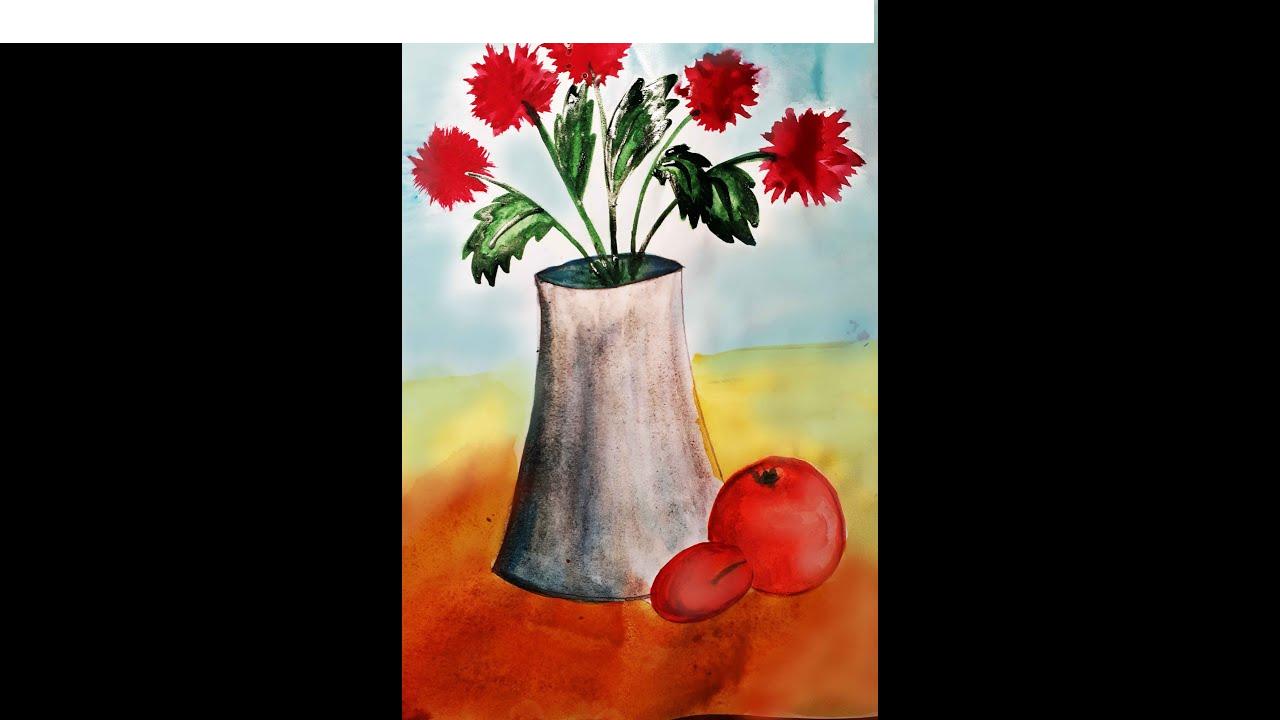
We draw a still life flowers in a vase and fruits
This lesson shows how to draw a still life bouquet with flowers in a vase, fruits, drapery, books on the table in stages with a pencil. Academic drawing lesson.
At the beginning of any drawing, we need to outline the lines near the edges of the paper, which we do not want to protrude, and then outline the objects themselves. There is no need to bother too much, as long as it is clear where which objects are located and what size they are. Here's what it looked like for me:
Then I marked the flowers in the bouquet itself, and also drew the books, drapery and apples in more detail. Pay attention to how daisies are drawn: the general shape, size and arrangement of flowers are outlined, but the petals and leaves themselves are not drawn. This we will do later.
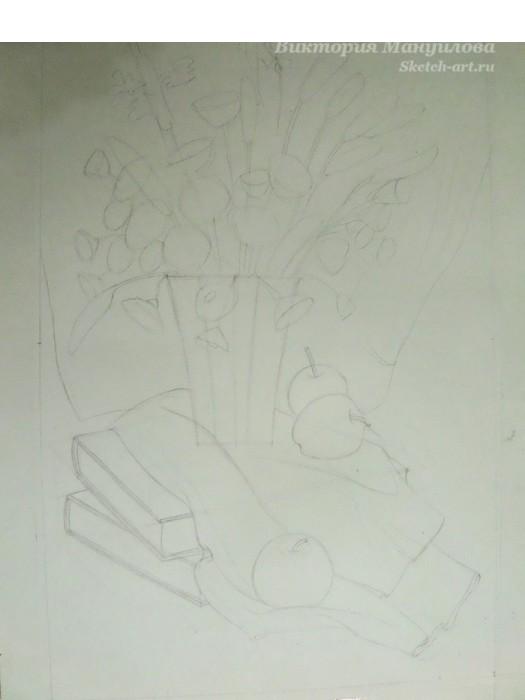
Next you need to build a vase. I have it glass, with an interesting cruciform relief on the edges. We start building by drawing the base (bottom) of the vase. In this case, it is hexagonal. A hexagon, as you know, fits into a circle, and a circle in perspective is an ellipse. So, if it is difficult to build a hexagon in perspective, draw an ellipse, mark six points on its edges and connect. The upper hexagon is drawn in the same way, only we have it larger in size as the vase expands to the top.
When the base and neck are drawn, we connect the dots and we will automatically learn the three faces of the vase. I immediately drew a pattern on them.
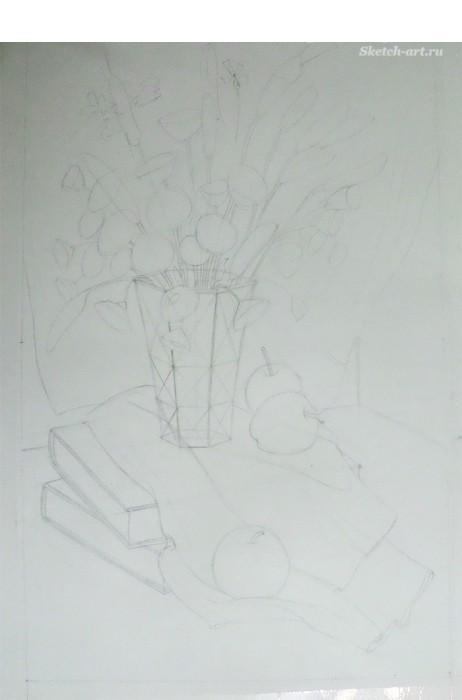
After that, I drew the borders of the shadow on the objects and started hatching. I started shading from the darkest - books. Since the pencil has not unlimited possibilities and has its own limit of brightness, you need to immediately draw the darkest object at full strength (with good pressure). And then we will hatch the rest of the objects and compare them in tone (darker or lighter) with books. So we get a rather contrasting still life, and not a gray one, like beginners who are afraid to draw dark areas.
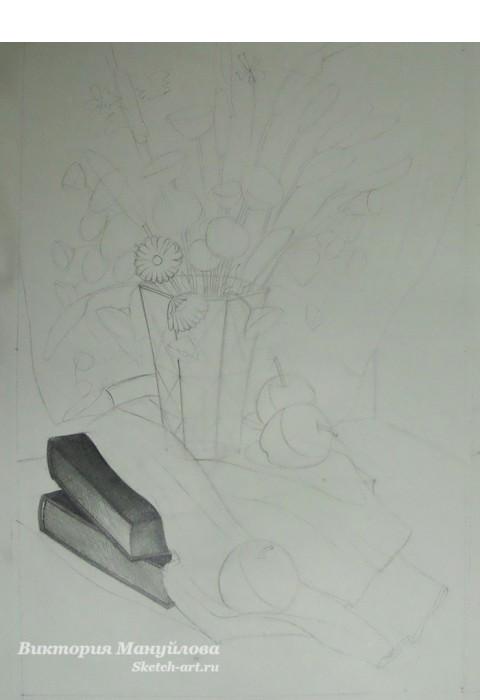
Then you need to determine the tone of the remaining objects. I look at my still life and see that the drapery on the books is lighter than the books. Unfortunately, when I was painting a still life, I didn’t think of taking a picture of it, so I’ll have to take my word for it. The drapery that I hang behind the bouquet is darker than the one on the books, but lighter than the books. Apples are darker than light drapery and lighter than dark. When you draw something, ask yourself questions: “What is the darkest?” , "What is the brightest?" , "Which of the two is darker?" This will immediately make your work correct in tone and it will look much better!
Here you can see how I start shading the rest of the objects:
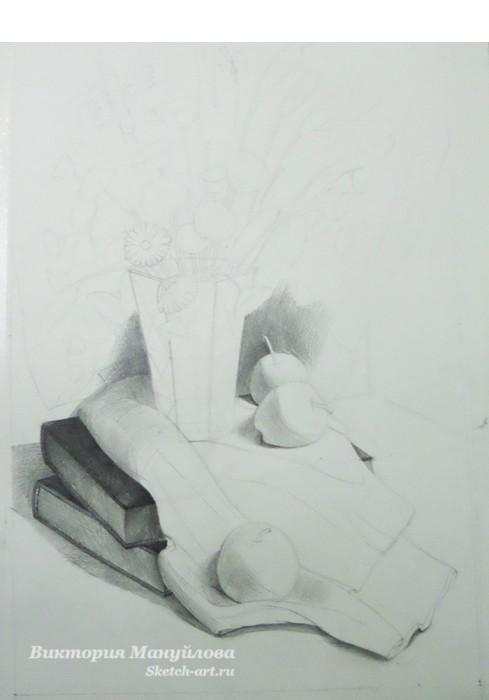
Here you can see how I started work on the vase. When working on glass, you should immediately try to draw all the details. Look at what you are drawing and see where the highlights (white flashes of light) are. Glare should try to leave white. In addition, it should be noted that in glass (the same applies to metal objects) dark and light areas are quite sharply different. If on the drapery the tones pass into each other smoothly, then on the vase the dark and light areas are close to each other.
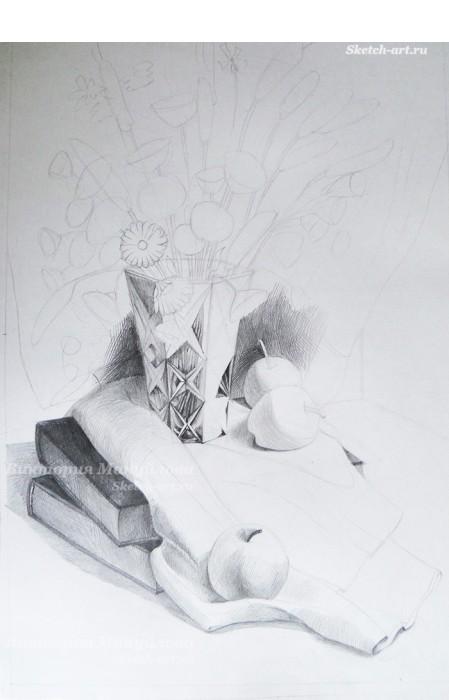
In continuation of the drawing, I shaded the back drapery. The photo below shows the directions of the strokes on the drapery, which should overlap in the shape of the object. Remember: if you draw a round object, the stroke resembles an arc in shape, if the object has even edges (for example, a book), then the strokes are straight. After the vase, I start painting the ears of wheat, since we still haven't determined their tone.
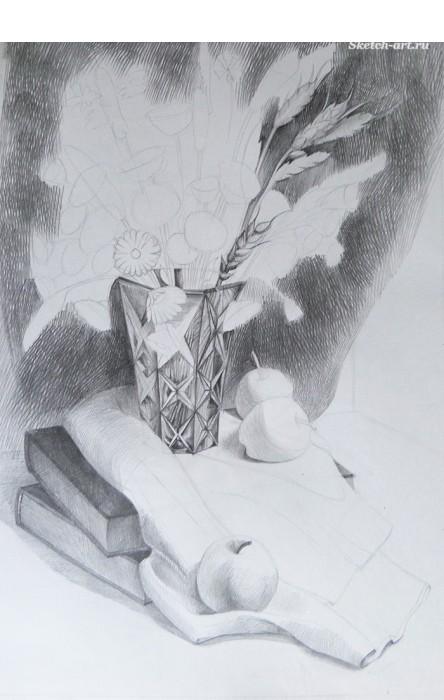
Here I decided to draw flowers and spikelets. At the same time, it is important to look at nature and notice the differences between the colors, because they are not the same. Some of them lowered their heads down, some vice versa - they look up, each flower needs to be drawn in its own way.
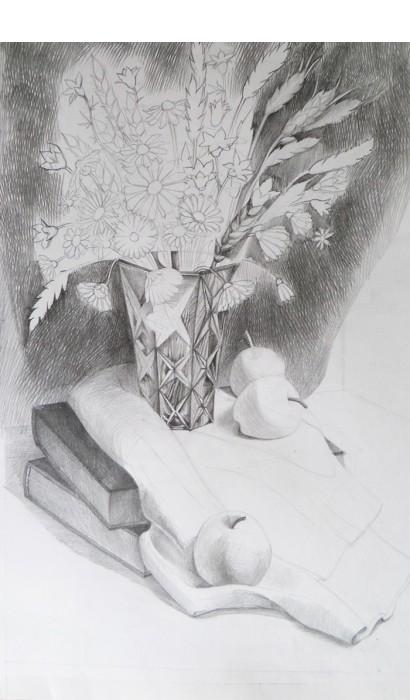
Then I shaded the white background between the colors. We got such white silhouettes on a dark background, with which we will work further. Here I am working with light drapery. Do not forget that the strokes fall on the forms.
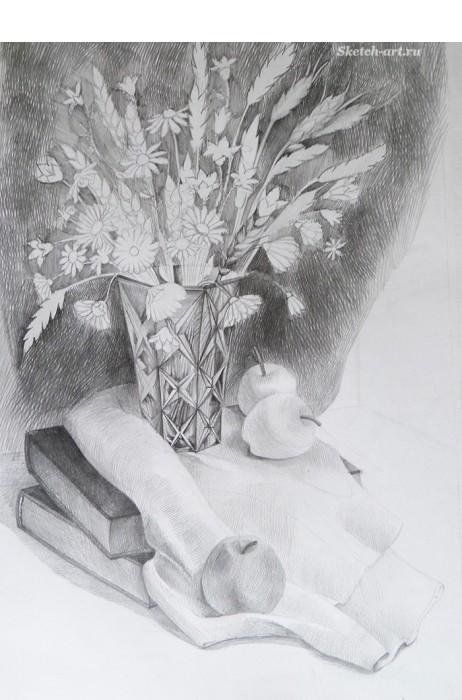
Meanwhile, the time has come when we begin to draw the most interesting thing - a bouquet. I started with ears. In some places they are lighter than the background, and in others they are darker. Here we must look at nature.
At this point, I darkened the front apple as it wasn't dark enough.
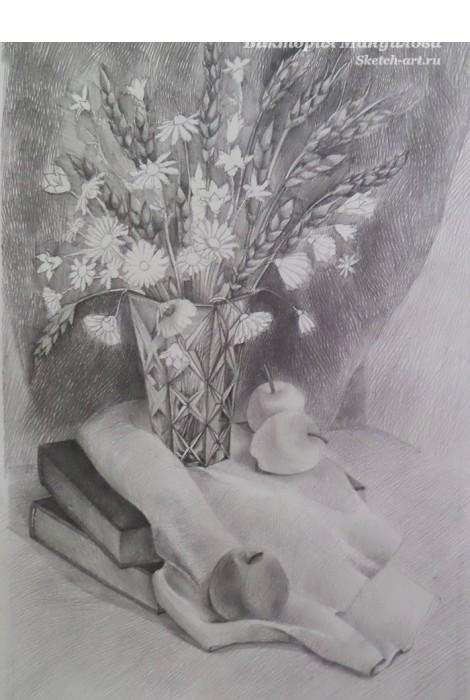
After that, we begin to draw daisies. First, we determine where the shadow is on them, where the light is and shade the shadows.
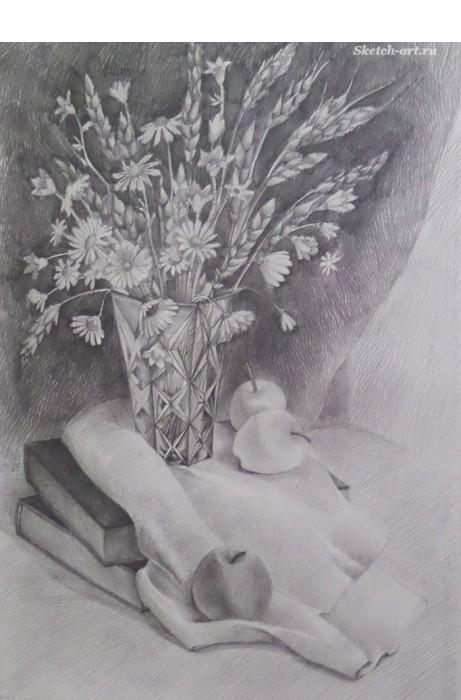
We are working on flowers. Refine the nearest apple, brighten the highlight area.
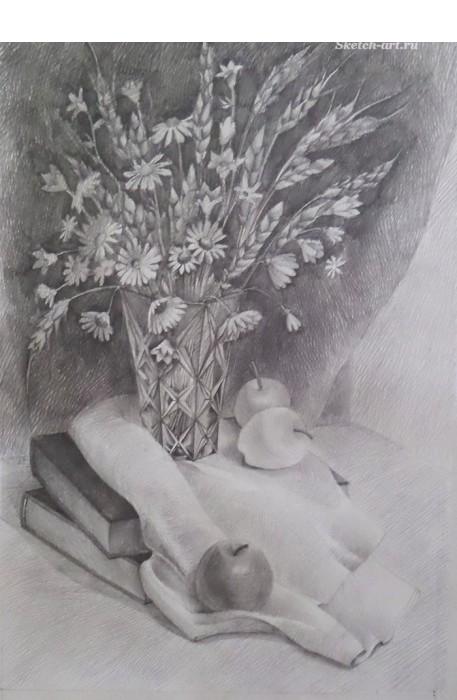
Then I finalized the distant apples (darkened them and outlined the highlights).
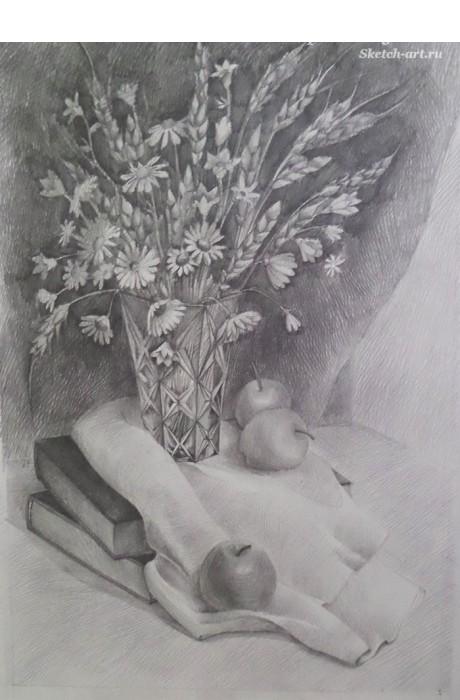
Our still life is ready! Of course, it can still be refined for a very long time, but time is not rubber and I decided that it already looks pretty good. I inserted it into a wooden frame and sent it to the future hostess.
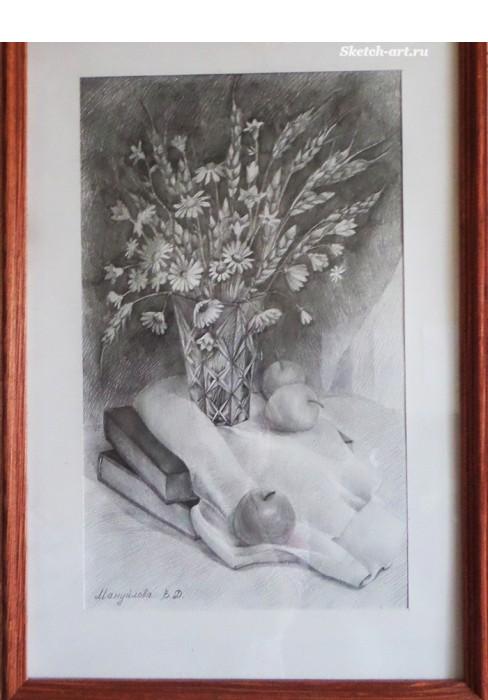
Author: Manuylova V.D. Source: sketch-art.ru
There are more lessons:
1. Flowers and a basket of cherries. Still life easier
2. Video skull and candle on the table
3. Dishes
4. Easter
Leave a Reply